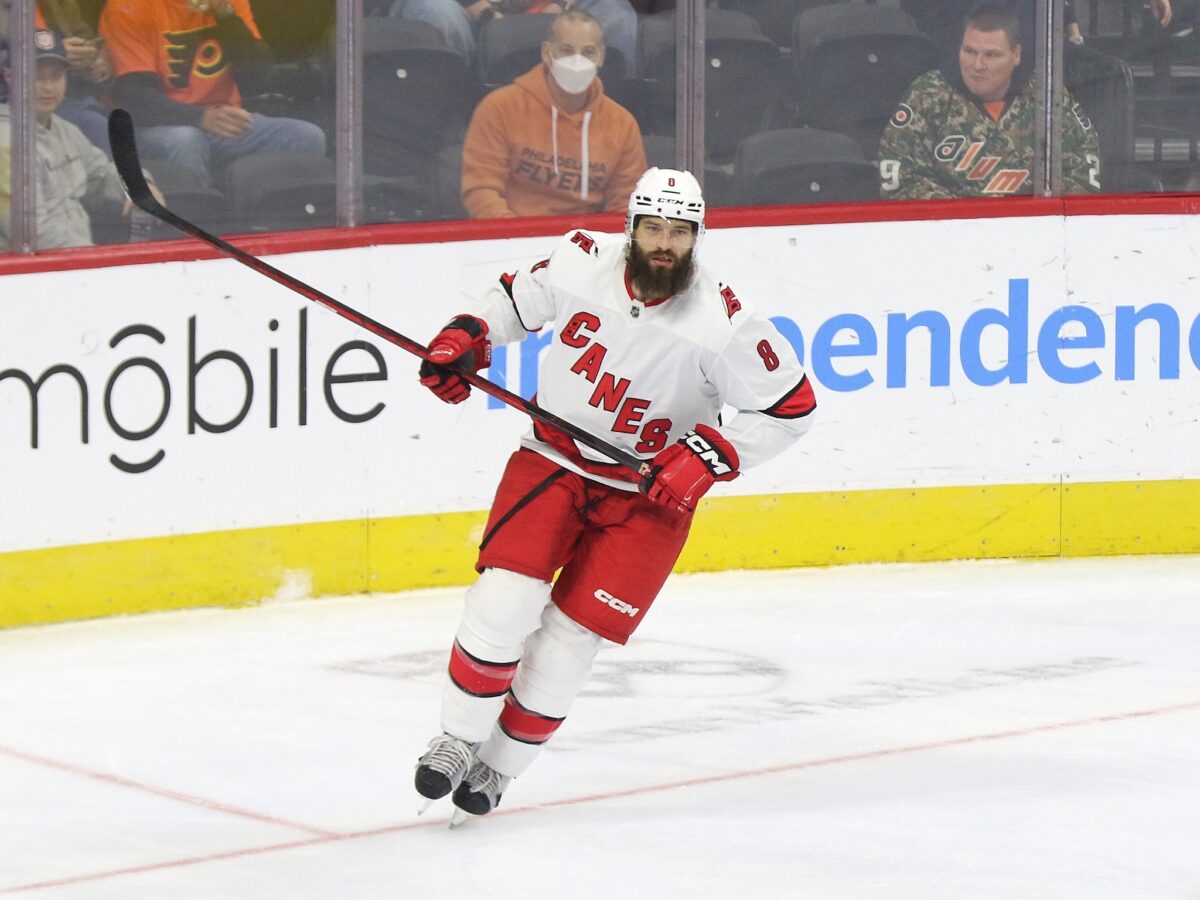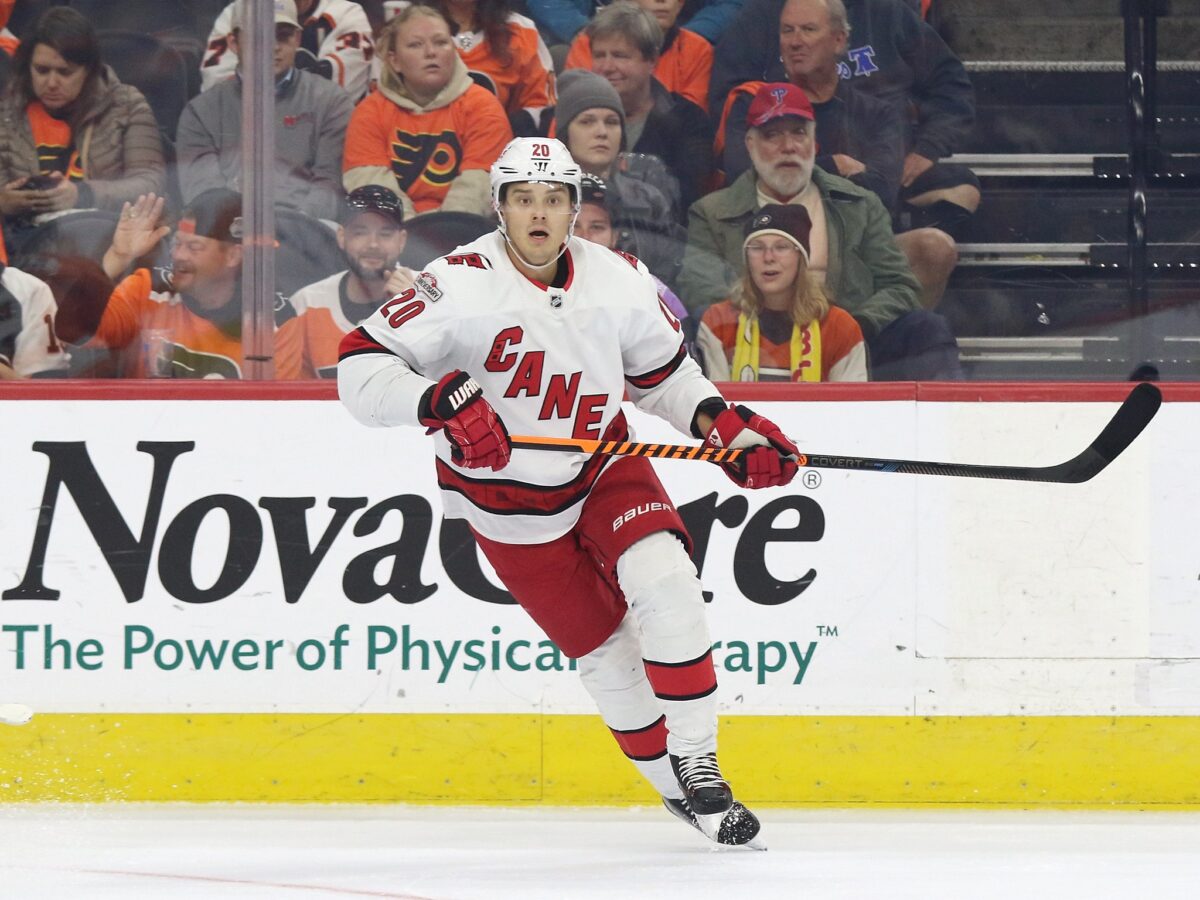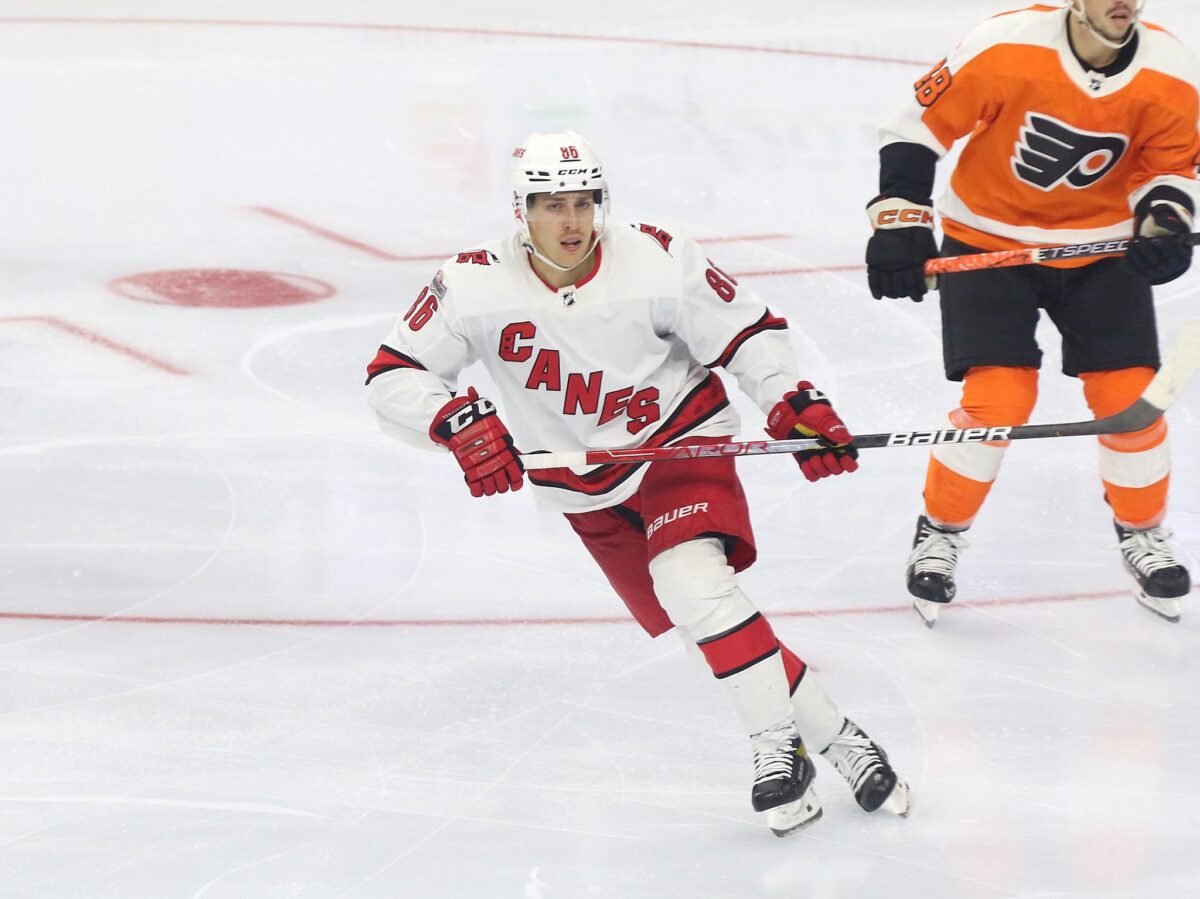There are certainly worse ways to start the season than with a 6-2-1 record, sitting atop the Metropolitan Division with a slim lead over the surprising New Jersey Devils in the (very) early going. When being critical of anything at this juncture, it should always be taken with a grain of salt, but that’s especially true when the team is still finding that level of success. However, as the first month of the NHL season comes to an end, there are some clear areas where the Carolina Hurricanes could use improvement; areas that will be paramount if the team wants to find more postseason success this spring than they have the last few seasons.
The topic that sits front and center today is special teams. Through about one-ninth of the season, the Hurricanes have the NHL’s 24th-best power play at 17.1 percent, and the 16th-best penalty kill at 79.4 percent. A little of this could turn out to be a small sample of unluckiness, but that doesn’t mean there isn’t legitimate cause for concern – especially where the man advantage is concerned. So, today, we’ll dive into what is currently ailing those two units, and what could be done moving forward to rectify it.
Penalty Kill Still Figuring It Out, but the Personnel Is Still There
When it comes to the penalty kill, there is plenty of reason for optimism. Especially when compared to the power play, it simply feels like the players on the units are just a little slow to get back into the swing of their ultra-aggressive system, and some natural growing pains are occurring as they work out the early-season kinks. Nonetheless, this is the same unit that was far and away the best in the NHL last season at 88 percent, returning mostly intact from last season (with the exception of adding Brent Burns, who was a key piece of the San Jose Sharks’ second-ranked unit in 2021-22). The departed Vincent Trocheck was an important shorthanded piece, but between Jordan Staal, Sebastian Aho, and Paul Stastny, there are plenty of viable veteran centers that ought to be able to replicate his production.

However, after allowing a power play goal in six of the last seven games – and the lone exception being a 6-2 loss in which they only took one penalty – the unit is clearly struggling right now. One of the biggest culprits is bad turnovers when the team has a chance to clear. In fact, that particular trend of bad turnovers coming out of their own end on the breakout has shown up both at even strength and while killing penalties. Quick counterattacks off of these, while the rest of the team is headed up ice, is a pretty good way to allow high-danger chances. The Hurricanes need to be significantly stronger on the pucks and make sure they’re finding an open lane before trying to clear the zone.
Another moderately concerning trend is the play of the goaltenders. I would stop short of saying the Hurricanes’ tandem has been flat-out bad, but there are times the Hurricanes could have used a save or two they didn’t get. Granted, the team is still 6-2-1, so they’ve gotten enough saves to win pretty much every night. Especially on the penalty kill, though, a situation in which you often need your goaltender to be your best killer, there have been a handful of goals this season that Frederik Andersen in particular would likely want back. The Danish backstop has struggled to come up with saves while down a man, with five goals on 15 shots so far, via Natural Stat Trick. Amongst goalies who have seen at least 10 shots while shorthanded, only Petr Mrazek has a worse save percentage (SV%).
Related: Hurricanes Starting to Get the Burns They Sought
With the aggressive style of penalty killing the Hurricanes have come to be known for, high-danger chances are going to happen on occasion. It’s a big ask of any goalie to step up and stop those consistently. However, Andersen and Antti Raanta have been very steady in this regard in their Hurricanes tenures – the team never would have succeeded at nearly a 90 percent clip last season otherwise. Once Andersen settles in and starts playing a little better in general (he has just an .896 SV% so far), it still seems possible, if not likely, these numbers will normalize and the Hurricanes will begin climbing back up the league rankings.
Power Play Succumbing to Old, Frustrating Habits
Whereas the penalty kill mostly feels like a “matter of time”-type ordeal where they will likely start to climb the league rankings in no time, the power play is the unit that has provided lots of frustration amongst the Hurricanes fanbase. The problem is, it’s the same old problems the unit has had for a couple of years now, namely stagnant off-puck movement and taking too long to move the puck (which, honestly, go hand-in-hand). This is also compounded by slow starts from a few key offensive players, namely Teuvo Teravainen, who is a heavily-relied-upon creator on the power play.
On far too many power plays the Hurricanes simply pass the puck back and forth around the three players high in the zone, at the top of the umbrella or along the half-wall. They’ll then look for a predictable one-timer, usually from Burns or Dylan Coghlan, only to typically have that blocked and cleared. There’s little flow or creativity on the man advantage lately, with a lack of lane-switching and off-puck movement that stresses the defense and opens up seam passes. Stationary power plays means stationary penalty killers, with it being way too easy to mark lanes and shut down passing windows through the middle of the ice. So while getting one-time bombs from those two players isn’t a bad idea, it’s rendered useless when everyone in the building knows exactly when and where it’s coming from.

There was a striking contrast when watching the Hurricanes’ playoff series with the New York Rangers, with the Broadway Blueshirts making the ‘Canes collective head spin with impressive set plays and quick, precise passing. That was one of the obvious areas of need for the Hurricanes in trying to take the next step, and additions like Burns gave hope for improvement this season. So far, though, while the personnel looks a tad different, the system and overall strategy appears almost identical, and therefore the results are too (if not worse, actually). The Hurricanes have enough talent that replicating that puck movement and power play success should be a reasonable goal, if not an expectation. The jury is still out on if that talent is enough, or if the offseason additions will make enough difference in the long run.
Perhaps the most concerning part is how often the power play has failed in big spots this season. It’s one thing to not score, but there have been some monstrous opportunities where the unit not only didn’t capitalize, but also failed to generate any sort of momentum that could have at least carried over after the penalties expired. Twice now this season, the Hurricanes had late power plays with a chance to put the game away in regulation. In Calgary, it was a four-minute double-minor with about six minutes left in the game. It was frankly one of the worst power plays I’ve ever seen and thinking back, I’m not sure they got a shot on goal. They would go on to lose in overtime.
The other notable chance was Monday night (Oct. 28) against the Washington Capitals, getting a power play with under two minutes to play in regulation. They once again failed to capitalize, then came up short on an overtime 4-on-3. Even with the extra ice, the play was stagnant and predictable. They were lucky to ultimately escape with the shootout win, but that was still a chance to take an overtime point away from a division rival. Heck, we could even go back to the nearly minute-and-a-half of five-on-three that went by the wayside against the New York Islanders just a few nights earlier. The visitors went on to run away with the game. See a trend here?
A Key Focus With Plenty of Time to Improve
Special teams are too important in today’s NHL for the Hurricanes to continue to struggle in these areas and expect to make a deep playoff run – especially in important, late-game moments. Championship teams find a way to make their opponents pay for mistakes. Early in the season, because of their five-on-five excellence, it hasn’t hurt the team too bad – much like a progressively less-effective power play last season didn’t hurt them on their way to a division title. However, when the postseason games begin and the games get tighter, teams are often faced with hot goalies, stingy, mistake-free defenses, and high-flying offenses. You can’t expect to miss opportunities as consistently as the Hurricanes have early in the season and survive for long.

That’s the bright side, though: it’s extremely early in the season. The Hurricanes have plenty of time to smooth out these issues, and newcomers such as Burns, Stastny, and a hopefully-back-soon Ondrej Kase can all help in both of these situations as they get settled into the team and system. Plus, for the power play, I hear that Max Pacioretty guy has a knack for putting the puck in the net, and will certainly help once he returns to action in a few months (55 career power play goals). Regardless, seeing these familiar, recurring issues that played significant roles in the postseason loss to the Rangers just a few short months ago is cause for concern. If the Hurricanes are going to take another step toward Stanley Cup contention, improvement on special teams has to be a priority moving forward.